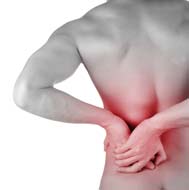Knowledge Center
Focus On Ergonomics
|
 |
Bureau Statistics data show that lost workdays from all injuries
has increased from 62.1 days per 100 workers in 1978 to
74.2 workdays in 1989.
The Department of Health and Human Services had hoped to reduce lost workdays to 35 per 100 by 1990, a goal that has become utterly hopeless in the face of rising rates of muscular-skeletal injuries. Cumulative disorders (CTD's) are the most rapidly growing category of injuries and illnesses reported to OSHA. In 1980 only 18% of work-related illness could be laid at the doorstep of "ergonomic disorders". By 1990, that figure had risen to 55%. Other studies have indicated the lost days were even higher than claimed by the Bureau of Labor Statistics.
Lost work days and hours are only part of the problem. Workers trying to make their body fit the task rather than the task fit their body are losing productivity due to fatigue every hour they are "on" the job. Measuring hours lost on the job is far more difficult.
The first line of defense against any CTD is to try to prevent the injury before it starts. In the case of back injuries, which are the most disabling and costly ones, not only to industry but to the employees affected, primary prevention is complicated by our poor understanding of the etiology or chain of causation of back injury.
Most injuries, related to poor ergonomic design of equipment being used does not begin with a major trauma; most are the product of months or years of mini-trauma.
What can you do now to improve your productivity as well as protect your employees' health?
- Evaluate your injuries. When and how are injuries occurring? Are your workers aging, or out of shape? Are new employees predominately the ones getting hurt? Once the evaluation is done:
- Redesign the job. Job redesign along with sound ergonomic principles is probably the single most important factor in increasing productivity and reducing worker injuries.
Whether you are revamping an assembly line, or replacing a single piece of equipment, the idea is the same: try to make the job fit the worker; don't try to force fit increasingly diverse workers to the job. This may take the form, in a large company, of providing mechanical lifting devices and using robotics to simple, inexpensive solutions such as ergonomic workstations.
This is where Pro-Line fits into your plans. Since the 1978 debut of the first generation Model HD (still our most popular model) and our retractable ball transfer table, Pro-Line has been the leader in ergonomic workstation design.
Since 1978, each year we have introduced new basic model workstations, ergonomic accessories and ergonomic handling devices. Within this site you will find what we feel is the "leading edge in modular ergonomics."
Please keep in mind that the field of industrial ergonomic design is still emerging. The products found here are those with broad applications. Many of our orders are designed for a customer's unique application. Start by calling or fax a freehand sketch to your distributor or the factory. (Pro-Line's complete product catalog can be easily obtained by filling out a request form.) We will return your idea as a drawing and with a quotation.
Now and beyond, professional Hi-Tech environments require more than strength, modularity and ergonomic design in their workstations. They want aesthetics.
Manufacturing furniture can't be as plush as office furniture but management still wants manufacturing personnel to feel they are working in a professional environment. They are getting away from stringer supported gray legs with holes, tops edged with plastic (the most common fracture point), metal drawers with sharp edges (at knee level). When you consider it, is it fair that an average office employee sits in a $3,600 cubical and many manufacturing employees sit at $195 industrial grade benches?
In designing all of our products, we have strived to incorporate strength, ergonomic design and aesthetics, keeping in mind that we want to offer the end result at an affordable price.
Pro-Line is committed to giving you the quality and service
you deserve.
Give us a call next time you are putting up a new building, setting up a new line or simply modernizing your production or lab area and you will see you can get the latest designs in ergonomic workstations at a fair price.
Sincerely,
![]()
Robert W. Hatfield Jr.
President

 Use Our 3D
Use Our 3D